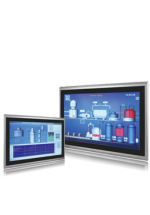FAQs
Common Specifications
Each type has a slightly different alloy composition, with the primary differences listed below:
304: 18-20% chromium and 8-10% nickel.
316: 16-18% chromium, 10-14% nickel and 2-3% molybdenum.
Due to the addition of molybdenum, corrosion resistance is increased against chlorides such as salt water, de-icing salts and chlorine-based cleaning products.
Consequently, 316 stainless steel is recommended for marine applications and food processing environments where heavier cleaning (involving chlorine-based solutions) is involved.
Assembled Products (Panel PCs, Industrial/Embedded BOX PCs)
Plug the HDD into any Windows PC.
Click Start, All Programs, (Right Click) This PC and click Manage.
Click Storage, then Disk Management.
A message should pop up and ask ‘Do you want to initialise new disk’, click yes and choose MBR (not GPT) option. If not, locate the Disk in the bottom half of the screen.
Format the disk as NTFS
Mark the partition as ACTIVE (right click on the disk, click ‘Mark partition as active’).
You can now use the ‘Recovery Disc’ provided by DSL with all systems to install Windows.
To enable the Industrial PC to have a power button as you’d have on your desktop PC, use the green connector supplied to attach a momentary switch.
Go into ‘Control Panel’, ‘Power Options’ and ‘System Settings’ to define what the switch will do when activated – sleep (soft shutdown), turn the unit off (hard shutdown) or on.
**Please note:- The switch is not supplied as standard on all units. Ask your DSL account manager to confirm availability.
Single Board Computers
Such boards are designed for educational or hobbyist applications and often carry a warning similar to the below. For this reason, it can be dangerous to employ such a unit in an embedded application that requires longevity and continuity of supply.
‘We do not encourage the use of the board that we manufacture in commercial products. We are not able to schedule parts and arrange for production for orders that we cannot see. Meeting demand is difficult as a result.
In addition, we will make revisions to the board as we find necessary, and we will not continue to make older revisions. This can result in supply and compatibility issues for those using them in a product.’
If the screen was not purchased via DSL, it is likely that you will need a custom BIOS to achieve functionality.
Either the CPU module has a critical hardware failure or the built in MTBF counter has elapsed, enabling you to replace the unit once it has surpassed its traditional MTBF figure – for ultimate reliability.

